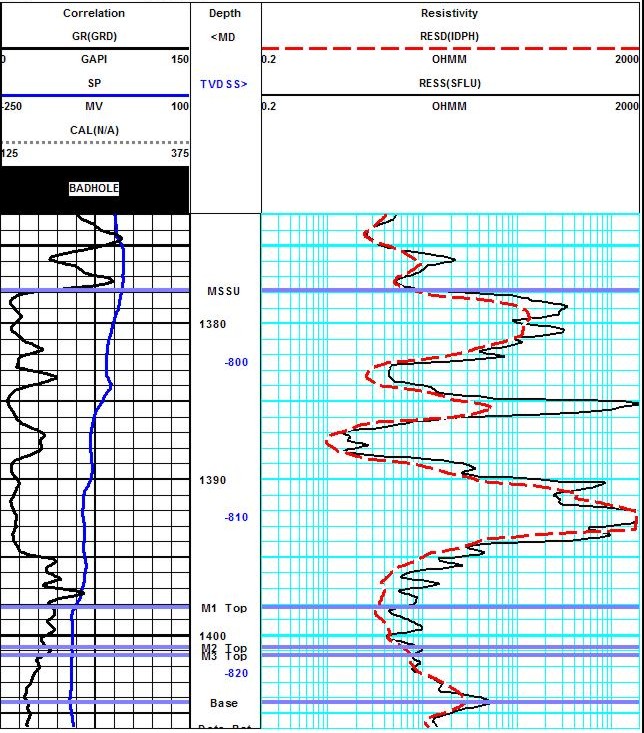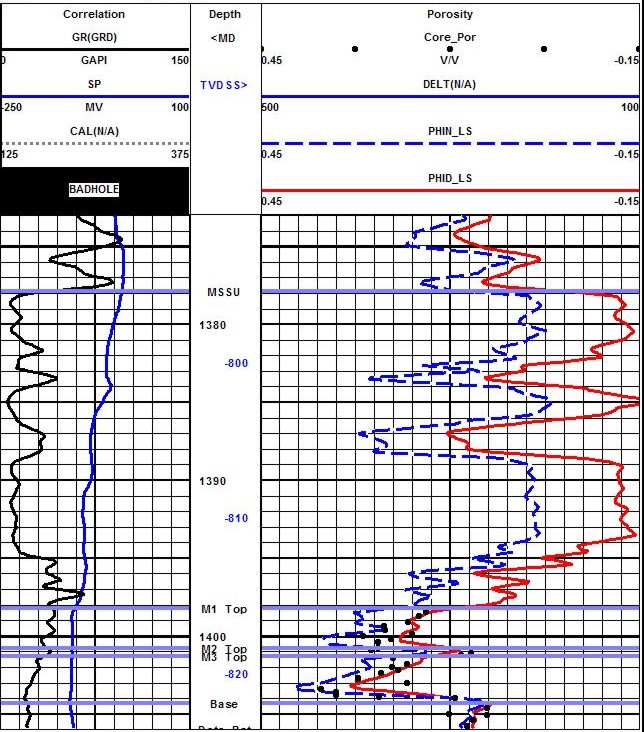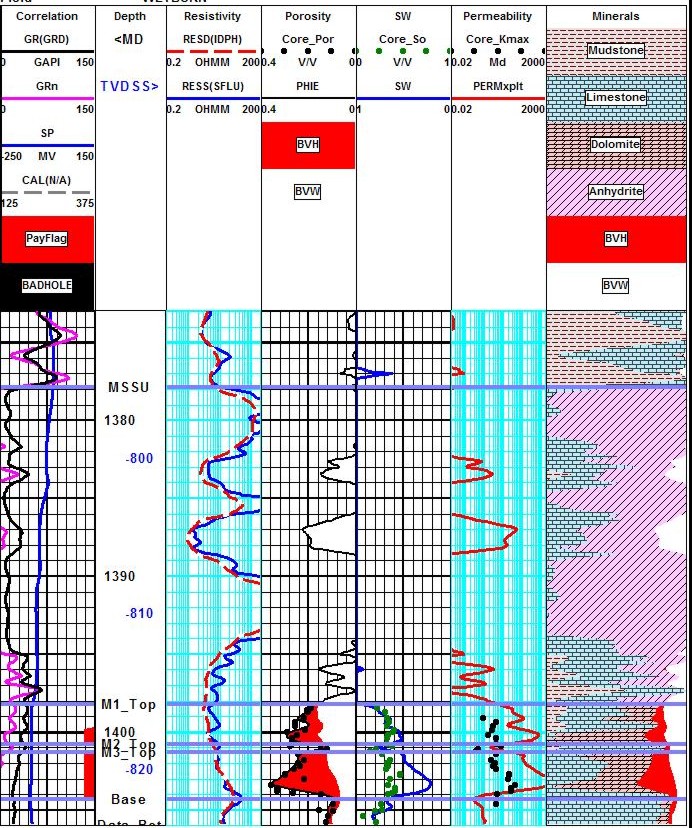|
 CARBONATE EXAMPLE
CARBONATE EXAMPLE
There are three critical factors
in assessing carbonate reservoirs, and of course they are
somewhat linked to each other. Lithology, porosity, and
water saturation determine everything else about the
reservoir. All three tend to be more variable than in the
sand shale environment. Lithology variations may occur in
fairly thin beds. Even the prolific reservoirs in the Middle
East suffer from this problem. Porosity can range from near
zero to the mid thirties; all petrophysical answers are very
sensitive to minor errors and parameter changes at low
porosities.
Finally, the pore geometry can
vary dramatically from one level to the next, causing changes in
irreducible water saturation and permeability Electrical properties
are seldom constant. Fractures may influence the apparent saturation
numbers, requiring some extra effort.
And oil companies are getting lazy
- we don't collect enough data to solve some of these problems,
assuming that the data in ancient well files can be found and will
answer all questions reliably. This just doesn't happen in real
life. Try to find a particular special core analysis or the sample
description record from 50 years ago. Lab work is better today.
Geological concepts have changed. Conventional wisdom of the 1950's
and 60's has moved on. So we need new data to improve accuracy in
our analysis.
This example does not have any new
data except the logs and a sad well test. All parameters are based
on "world-average" numbers tuned to the area by years of experience.
The lithology consists of layers of anhydrite, dolomite, and some
limestone. Porosity is moderate to zero. Although thin, some low
porosity layers act as traps within the overall reservoir, just as
they do in the Arab D and other carbonates in the Middle East.
The reservoir has been in
production since 1954 but new wells continue to find pockets of
porosity at initial reservoir pressure. What does that tell you
about reservoir continuity? You are bound to find depleted zones as
well. This example has both, separated by an almost invisible tight
streak. The upper oil layer is depleted and tested water. The lower
zone is at irreducible water saturation and would probably produce
clean oil if good isolation between it and the upper zone could be
maintained. Since the oil lies under a wetter zone, there appears to
be no fracture connecting them, although natural fractures are known
in the area.
Full size logs are shown below.
See what you can see about the M1 and M3 zones before you look at
the answer plot.

Deep and shallow resistivity logs. Contrast resistivity of M1 and M3
intervals with each other and with water zones higher in the
section.

Density neutron log. Compare porosity between M1 and M3. Can you see
the tight streak between them? Dots are core data points.


Computed results for carbonate example. Note higher water saturation
on M1 compared to M3. M3 is bypassed pay. M1 is depleted oil. Dots
are core data. Note that residual oil on core in M1 matches
calculated
Sor = (1 - SW). In M3, Sor on core is less than (1 - SW) from log
analysis, so there is moveable oil in
M3 interval. Calibration to core permeability needs more work to get a
decent match.
|

